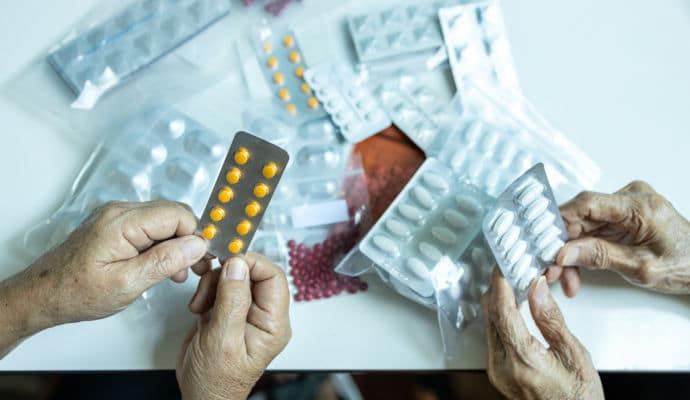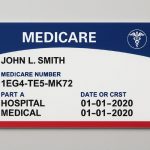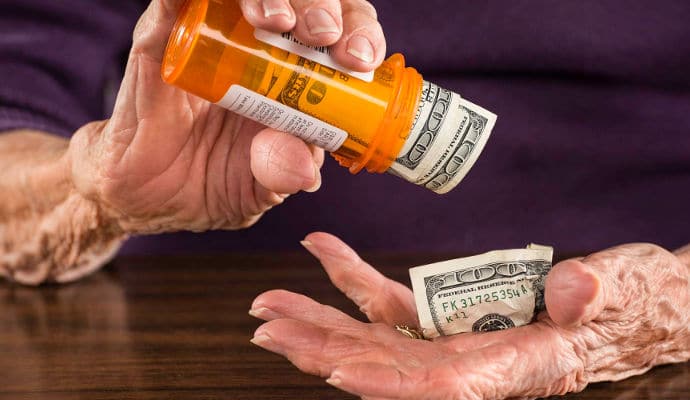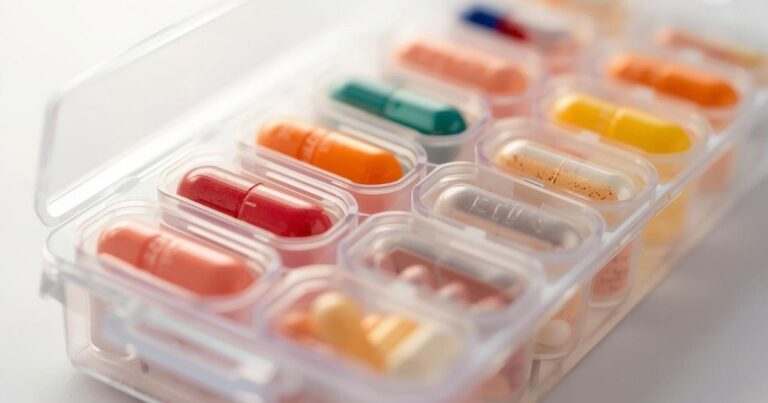Cleaning out an older adult’s medicine cabinet is an easily forgotten caregiving task. Hedva Barenholtz Levy, PharmD, explains why it’s essential to do this once a year and shares five easy steps to ensure all medications are safe and up to date.

Aging adults are the most common consumers of medication in the U.S., with 85% taking at least one medication regularly, and 36% taking five or more.
Plus, nearly 40% of older adults use over-the-counter (OTC) products, and 64% use dietary supplements regularly.
Every home has some form of medicine cabinet for storing medications. However, they tend to accumulate over time, posing health risks.
This article shares three reasons why it’s essential to regularly clean out your older adult’s medicine cabinet and five simple steps to do so safely.
The Top 3 Reasons to Clean Out the Medicine Cabinet
Cleaning out your older adult’s medicine cabinet is an important yearly task.
1. It can lead to safer medicine use
Regularly evaluating all medications reduces the accidental use of old, outdated, and possibly ineffective medications.
2. Medication quality changes over time
Eventually, all drugs degrade and become less effective, ineffective, or even harmful.
Any medicine your older adult takes still must do its job.
3. Reduce medication errors
The risk for medication mix-ups and confusion increases when there are old or no-longer-used medicines at home.
The most significant concern is that your older adult or a caregiver might accidentally reach for an old or incorrect pill bottle that’s stored in the medicine cabinet.
5 Simple Steps to Clean Out Your Medicine Cabinet
1. Gather all of your older adult’s medications in one spot
Gather all prescriptions, OTC products, and supplements, as well as creams, ointments, nasal sprays, eye drops, and liquid products.
Safely dispose of any loose tablets or capsules that you find (see tips in #4 below).
Set aside anything that isn’t stored in its original containers, not appropriately capped, or with labels that have come off or are unreadable. All of these items should be discarded (see #4 below).
2. Identify prescription medications that are old or no longer used
Separate the prescriptions that your older adult is currently taking from the ones that your older adult no longer takes or that are expired.
The standard definition of an expired prescription medicine is one year from the date it was filled at the pharmacy. This date is found on the printed pharmacy label.
For medicines in the original manufacturer’s bottle, including inhalers and eye drops, the manufacturer’s expiration date can be used as long as the medication has been stored properly (see tip #5 below).
3. Identify nonprescription medicines that are expired
Check expiration dates to identify all expired nonprescription medications. A good rule of thumb is to discard products that are at least 6 months past their expiration date.
Expiration dates are printed either on the label or directly on the bottle, usually on the bottom or near the neck.
If the product comes in a box, the expiration date is often imprinted on one of the ends.
For creams or ointments, look at the crimp at the bottom of the tube.
Note: For dietary supplements, including vitamins, the government does not require an expiration date.
4. Safely dispose of old and/or expired medications
Safe disposal is essential to reduce the risk of accidental poisoning in children or pets, contamination of the water system, and improper or dangerous use.
Ideally, prescription and nonprescription pills should be emptied into a single bag and brought to a safe disposal / drug take-back location – found at most police stations and pharmacies.
Tablets and capsules should not be flushed down the sink or toilet unless you’re specifically instructed to do so by a pharmacist.
If you can’t get to a safe disposal location, empty all the pills into a bag, mix them with coffee grounds, cat litter, or another undesirable substance, seal the bag tightly, and throw it in the trash.
Creams and ointments generally can be thrown out in the trash. Get more information on safe drug disposal here.
To keep private information secure, be sure to scratch out personal information on the pharmacy label before discarding old medication bottles.
5. Properly store the non-expired medications
A final, but essential, step is to ensure your older adult’s medicines are correctly stored.
Be sure to store regularly used medications and supplements separately from those used only occasionally (like cold medicine). One way is to keep them in two separate and clearly labeled containers.
Heat, light, and humidity can affect the quality of medications and reduce their effectiveness.
The best location to store medications is a cool, dry cabinet away from heat, humidity, direct sunlight, and out of reach of children and pets.
The traditional bathroom medicine cabinet ISN’T a good place because of the exposure to heat and humidity.
Similarly, near the stove, oven, or in direct sunlight are also bad places to store medications.
Final Thoughts About Clearing Out the Medicine Cabinet
In conclusion, dedicating a little time to cleaning and organizing the medicine cabinet is a simple yet powerful act of care. By safely disposing of expired or unused medications, categorizing what remains, and implementing a clear system for refills, you transform a potential source of confusion and risk into a cornerstone of a safe home.
Making this a seasonal routine ensures that your family’s first response to a minor ailment is always secure, effective, and organized, providing peace of mind with every open door.
Disclaimer: Always consult a medical professional and/or a pharmacist when making decisions about medications or medication management.
Recommended for you:
- 6 Common Medication Problems in Seniors and 6 Ways to Solve Them
- 8 Tips to Avoid Harmful Drug Reactions and Overmedication in Seniors
- 10 Medications That Cause Falls in Seniors: Use with Caution
Guest contributor: Hedva Barenholtz Levy PharmD, BCPS, BCGP, is a clinical pharmacist who specializes in working with older adults residing in the community setting at HbL PharmaConsulting. She promotes the safe and effective use of medications through comprehensive medication reviews and by educating patients, healthcare professionals, and others who work with older adults.












